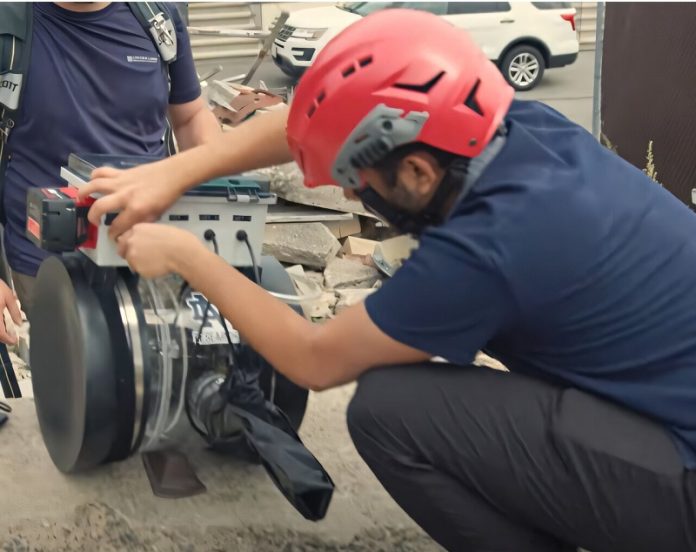
When buildings collapse during disasters like earthquakes or explosions, finding and rescuing trapped people can be extremely dangerous.
To make this job safer and more efficient, scientists at MIT Lincoln Laboratory, working with researchers from the University of Notre Dame, have created a soft robot called SPROUT.
SPROUT stands for Soft Pathfinding Robotic Observation Unit.
It’s a vine-like robot that can “grow” through small spaces and twist around obstacles.
This helps rescue teams search under debris and collapsed buildings without needing to dig or cut through dangerous rubble.
The robot is made of a soft inflatable tube that slowly unrolls from a fixed base. As air is pumped in, the robot extends forward.
Because it’s soft and flexible, it can fit through narrow gaps and move around corners.
At the tip of the tube, SPROUT carries a small camera and sensors that show rescuers what’s inside the rubble.
The operator controls the robot using joysticks, watching the video feed on a screen. Currently, SPROUT can reach about 10 feet, but the team is working to extend that distance to 25 feet.
SPROUT was designed to solve a big problem in urban search-and-rescue: how to look deep inside collapsed buildings without risking lives.
Tools like straight-line cameras or wheeled robots have limits. Cameras can’t bend around corners, and robots often get stuck or damaged in tight, unstable areas. SPROUT’s flexible design makes it much more suited to these tricky spaces.
Designing SPROUT came with some unique challenges. Since the robot bends in many places as it grows, controlling its movement was tricky.
The team had to figure out how to manage the air pressure inside so that when the joystick is pushed forward, the robot actually moves forward. They also had to reduce friction so the robot could move smoothly and develop a steering system that would be easy for rescuers to use.
SPROUT was tested with real search-and-rescue teams at a training site in Massachusetts. These tests helped improve the robot’s strength and portability, and showed the team how to make it easier to steer. In the future, the robot could be used not just to explore rubble, but also to create maps of the spaces under collapsed buildings and detect hazards.
One big challenge in designing rescue robots is the lack of real-world data. Collapsed buildings are unpredictable, and it’s hard to recreate these conditions in a lab. To fix this, the team built a simulator to mimic real disaster environments, helping them test and improve SPROUT’s abilities.
SPROUT was developed with the help of Professor Margaret Coad from the University of Notre Dame, a leading expert in “vine robots.” The project combines Coad’s research knowledge with MIT’s engineering experience and strong ties to emergency response teams.
Though it’s currently being used for disaster response, the team believes this type of robot could also help in other fields, like maintaining military equipment or inspecting hard-to-reach areas in infrastructure.
The ultimate goal is for SPROUT to give emergency responders a clear picture of what lies inside rubble—before they send in a human team.



